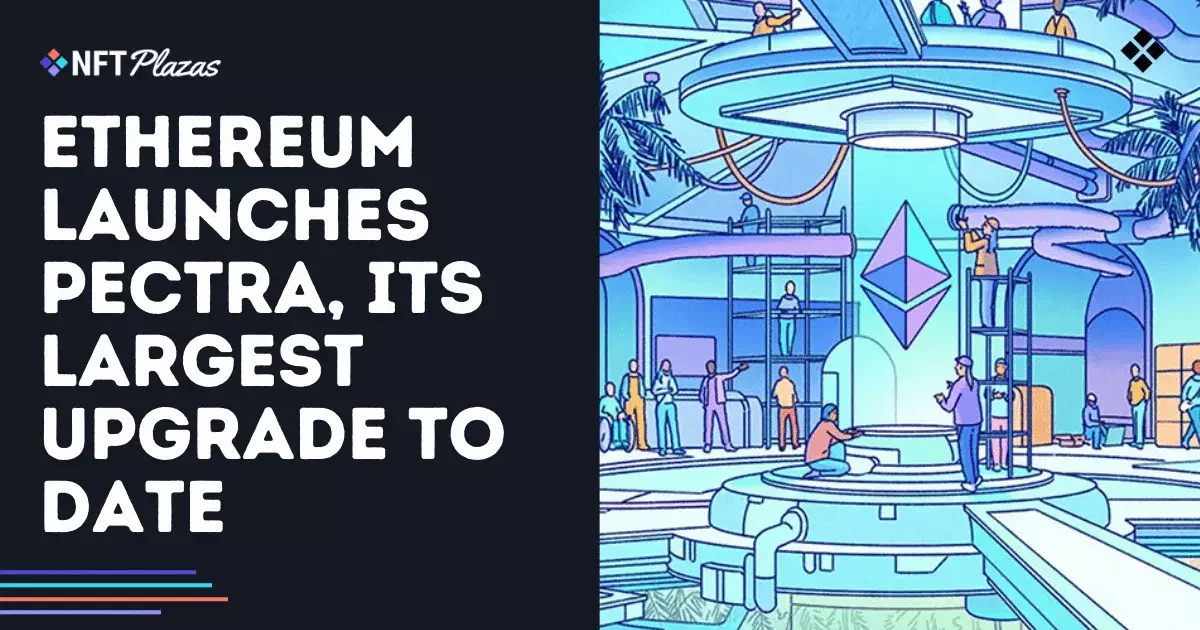In a rapidly shifting landscape dominated by decentralized technologies and cryptocurrencies, Ethereum has taken a significant step forward with the rollout of its much-anticipated upgrade, Pectra. However, as we celebrate its launch, one must ponder: is this an ingenious stride toward a brighter digital future, or merely a frenetic attempt to stay relevant in an increasingly competitive market? Pectra is a critical pivot that comes more than a year after the last major update, Dencun, yet it raises questions about whether Ethereum is genuinely innovating or simply treading water.
Pectra introduces several Ethereum Improvement Proposals (EIPs) that modify the networking rules and bolster user experience. While the technical aspects may seem groundbreaking at first glance—enabling wallets to function more flexibly and allowing validators to stake more efficiently—the reality is that these changes may not quell the growing concerns over Ethereum’s scalability and efficiency. It appears that Ethereum’s developers are aware of the stresses caused by swelling user demand but hesitantly skirt the larger, underlying issues.
The Catch-22 of Validator Metrics
One of the most notable features of Pectra is EIP-7251, which substantially increases the maximum stake allowable for validators from 32 ETH to 2,048 ETH. This intention to streamline operations for large validators is commendable on the surface. However, it draws attention to a larger problem: the growing centralization of the Ethereum network. By making it easier for larger entities to consolidate their stakes, Pectra risks eroding the decentralized essence of blockchain technology that Ethereum espoused.
Ironically, while aiming for operational efficiency, the upgrade may inadvertently create a tiered system where large validators dominate the landscape, marginalizing individual users. This centralization contradicts the original ethos of cryptocurrencies: democratization of finance. If Ethereum is not careful, it will fall into a transactional trap, where only those with substantial resources can afford to participate, potentially alienating the grassroots crux of its community.
Improving Throughput or Ignoring Capacity Strains?
The upgrade also delves into EIP-7691, which appears focused on improving Layer 2 scaling solutions by increasing the number of “blobs” from 3 to 6 per block. While this may seem like a positive advancement, it serves as a band-aid to a more complex problem. Increasing blob capacity may optimize some aspects today, but it doesn’t address the looming fear of congestion in the future. The very scalability that Ethereum strives for remains tenuous, like building on sand rather than a solid foundation.
Even as Ethereum enhances its data capacity, developers acknowledge that further scaling improvements must ensue to accommodate the anticipated surge in Layer 2 adoption. Are we merely extending a fragile infrastructure that will soon collapse under increasing demands? If the technology struggles to cope with minor tweaks, what, then, will be the long-term solution as Ethereum faces exponential growth? The decentralized ecosystem is akin to a high-speed train on a rickety track, and Pectra may only serve to widen the gap between ambition and capability.
The Vision Ahead: A Path to Prosperity or Decline?
Amid all the fervor surrounding its launch, it is crucial to consider what lies ahead. The next upgrade, labeled Fusaka, aims to address some of these constraints, including expanding data availability via a feature dubbed PeerDAS. Yet, the absence of a concrete timeline leaves stakeholders in a state of anxious anticipation, echoing the frustrations witnessed during previous updates. Every promise of improvement rests on a shaky foundation of both hope and skepticism, as users grapple with the uncertainty of Ethereum’s future trajectory.
While the goals of enhancing performance and ensuring decentralization are laudable, Ethereum’s developers must navigate a treacherous path. The upcoming challenges will test the network’s resilience, demanding significant attention toward preserving its foundational principles without compromising on performance. For now, Ethereum’s vibrant potential remains clouded by unresolved challenges and possible pitfalls, raising awareness about the inherent risk of rapid but unrefined innovation. The ongoing transformation of Ethereum will undoubtedly shape the future of NFTs and decentralized applications, but without a balanced approach, its legacy is at stake.


Leave a Reply